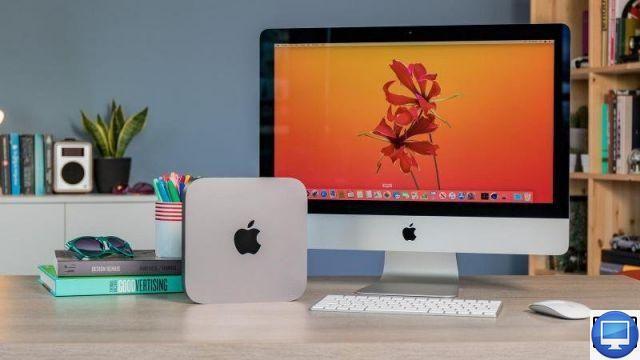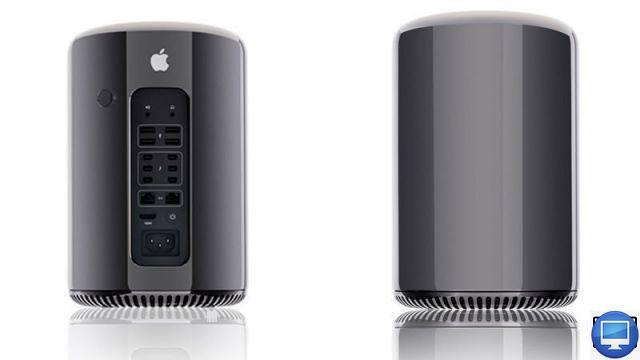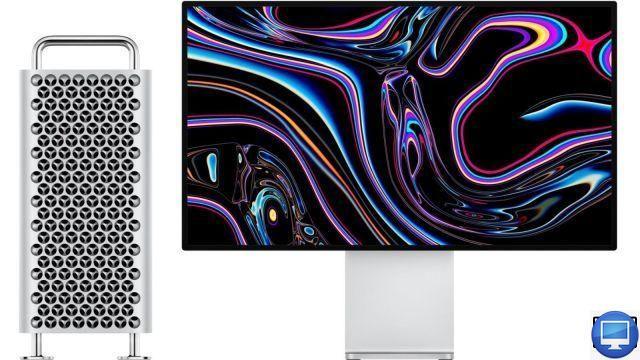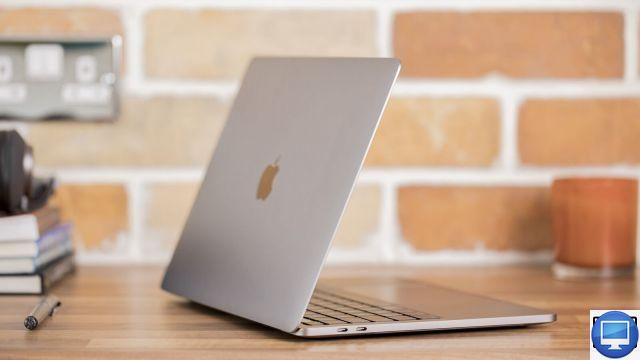
Summary
- > a complex relationship
- > Which configuration to choose for video editing?
- > Which Mac to choose for video editing?
- > Conclusion
It is difficult to define which Mac to use for video editing because there are several things to consider.
It mainly depends on your needs, whether you are a professional, working independently or as part of a studio, or an amateur. Indeed, if you are on a large-scale project, then you will have to turn to a more powerful machine than if you are creating a personal montage.
Whatever your profile, you should find your happiness by following our guide.
Macs and video editing: a complex relationship
For a long time, Macs had clear advantages, which benefited creatives in particular, over PCs. However, in recent times, Apple has disappointed many users...
Many of them felt overlooked by the company, as it seemed to spend more time on the evolution of its iPhones and MacBooks than on its pro models. This situation reached its climax with the release of the Mac Pro 2013, which arrived after years of complaints. Yet eagerly awaited by the public, it finally left a bitter taste...
Fortunately, it seems that Apple had time to learn from its mistakes, since in 2019 it released its successor, created with the help of professional advice. It now meets many wishes, with the integration of very powerful components and a more suitable design.
Although it is very expensive, overall it presents excellent value for money for professionals. The most satisfying improvement is the fact that it is expandable and can be customized.
For amateurs, the Mac Pro would be too greedy. It is rather advisable to get a device with an SSD disk adapted to your storage needs, with enough RAM, a large number of cores and a powerful graphics card. You should also determine the requirements for your editing software and other post-production tools.
Another “detail” to take into account, Apple is in full transition from Intel to its own processors. The brand began this process with the M1, installed in its mainstream Macs: the MacBook Air, entry-level MacBook Pro and Mac mini models, and the 24-inch iMac.
If you're worried about the firm's ability to match discrete graphics from AMD and other vendors, you might appreciate that it relies on Tile Based Deferred Rendering (TBDR), which is more efficient than the Immediate Mode Rendering (IMR) used by GPUs from Intel, Nvidia and AMD.

Which configuration to choose for video editing?
The field of video demands a lot of processors, graphics power and, above all, storage space. Editing, especially for high-definition video, consumes a lot of hard drive space, and with 4K editing becoming a standard, this problem is only getting worse.
Other than internal performance, you'll need to consider things like screen, portability, battery life, and connectivity, among other things.
Finally, it is important to make sure that your Mac supports software, such as Final Cut Pro, Adobe Premiere Pro and After Effects, 3D programs like Maya or correction programs like DaVinci Resolve.
Screen
As a creative, a large screen and high resolution seems essential. In that case, your gaze might be on the 27-inch iMac, the largest size currently offered for Macs.
There's no difference between the display of the standard 27-inch iMac and the Pro (which is no longer available, but you might still find on sale). Both offer a backlit LED display, with 5120 x 2880 pixels (5K), 500 nits brightness and Wide (P3) colors.
The Retina 5K display is stunningly beautiful, with the highest contrast we've ever seen, not to mention that it displays 99% of the DCI-P3 color space. It runs at 60 MHz instead of the 30 MHz found on most 4K monitors.
In August 2020, Apple even updated its iMac with, among other things, the possibility of choosing nano-textured glass.
If this size is not enough for you, know that you can always connect a second screen to it. For this, do not exclude the portable models MacBook Pro 13 or 16 inches. The latter is clearly favored by its 3072x1920 pixel display, but both offer a brightness of 500 nits and Wide colors (P3).
Portable models feature True Tone technology, which adjusts screen colors and brightness to suit the mood, useful if you're working in a low-light environment.
RAM
The RAM needed will depend on the software you are using and the amount of data to be handled. It is therefore advisable to overestimate it because Apple makes it difficult to upgrade the memory on its Macs, unless you have a 27-inch iMac or Mac Pro.
If you are thinking of buying an M1 Mac, like the M1 mini or the 24-inch iMac, be aware that they can only accept 16 GB of RAM, which is not much considering that the 27-inch has 64 GB of RAM. .
However, the 8 or 16 GB RAM on the M1 chip is not the same as the 16 GB provided by an Intel Mac. It's unified memory, bringing the GPU and CPU together so that all of those cores are accessible.
Here's how much RAM you can get for different Macs:
- Mac M1 : 8 Go de RAM standard, 16 Go en option.
- Mac Pro : 32 Go de RAM standard, 48 Go, 96 Go, 192 Go, 384 Go, 768 Go, 1,5 To en option
- 27-inch iMac: 8GB RAM standard, 16GB, 32GB, or 64GB optional
- MacBook Pro 16 bits : 16 Go RAM standard, 32 Go or 64 Go en option
- Mac mini (Intel model): 8 GB of RAM standard, 16 GB, 32 GB or 64 GB optional
- 13-inch MacBook Pro (Intel 2,0 GHz model): 16 GB RAM standard, 32 GB optional.
CPU
As explained above, Apple is in the process of switching all of its Macs to its own processors based on the Arm architecture.
For now, when it comes to high-end Macs, only Intel processors are available, but things should change soon.
To make your choice, if you are serious about editing, we recommend that you go for a higher core count.
It is also interesting to choose between i7 or i9 processors, generally presented as an alternative. They are, for the most part, equipped with hyper-threading, so the operating system can treat each core as if it were two virtual cores. You can also turn to a Xeon processor, like the one in the Mac Pro.
Also pay attention to cache, as an example the iMac Pro's Xeon had 42MB of cache, compared to 16MB for the 27in.
Mac Pro
- 8-core Intel Xeon W, 3,5 GHz
- Intel Xeon W, 12 cores, 3,3 GHz
- Intel Xeon W, 3.2GHz, à 16-core
- Intel Xeon W, 24 cores, 2,7 GHz
- Intel Xeon W, 28 cores, 2,5 GHz
27-inch iMac
- 5th Gen Intel Core i10, 6 cores, 3,1GHz
- 5th generation Intel Core i10, 6 cores, at 3.3 GHz
- 9th generation Intel Core i10, 8 cores, at 3.8 GHz
- 9th generation Intel Core i10, 10 cores, at 3.6 GHz
iMac Pro (si available)
- Intel Xeon W, 10 cores, 3,0 GHz
- Intel Xeon W, 14 cores, 2,5 GHz
- Intel Xeon W, 18 cores, 2,3 GHz
MacBook Pro 16 inches
- 7th generation Intel Core i9, 6 cores, at 2,6 GHz
- 9th generation Intel Core i9, 8 cores, at 2,3 GHz
- 9th generation Intel Core i9, 8 cores, at 2,4 GHz
- M1 Pro CPU 10 cores, 16 cores
Mac mini
- M1 8-core CPU, 8-core GPU
- 5th Gen Intel Core i8, 6 core, 3,0GHz
MacBook Pro 13 inch 2.0GHz
- M1 8-core CPU, 8-core GPU
- 5th generation Intel Core i10, 4 cores, at 2,0 GHz
Graphic
Overall, the M1 Macs' graphics are better than Intel's, but they're not up to par with AMD's discrete cards. Also, they lack the capability to support an eGPU.
Here are the graphics cards currently available:
Mac Pro
- Un module Radeon Pro 580X MPX, 8 Go de RAM, GDDR5
- One or two Radeon Pro W5700X MPX modules, 16 GB RAM each, GDDR6
- One or two Radeon Pro Vega II MPX modules, 32 GB RAM each, HBM2
- One or two Radeon Pro Vega II Duo MPX Modules, 64GB RAM each, HBM2
27-inch iMac
- Radeon Pro 570X, 4 Go de RAM, GDDR5
- Radeon Pro 575X, 4 Go de RAM, GDDR5
- Radeon Pro 580X, 8 Go de RAM, GDDR5
- Radeon Pro Vega 48, 8 Go de RAM, HBM2
iMac Pro (si available)
- Radeon Pro Vega 56 with 8GB RAM, HBM2
- Radeon Pro Vega 64 with 16GB RAM, HBM2
- Radeon Pro Vega 64X with 16GB RAM, HBM2
MacBook Pro 16 inches
It exposes a dual graphics configuration, with an integrated Intel UHD 630 card and one of the following cards:
- Radeon Pro 5300M, 4 Go de RAM, GDDR6
- Radeon Pro 5500M, 4 Go de RAM, GDDR6
- Radeon Pro 5500M, 8 Go de RAM, GDDR6
The Mac mini and the 13-inch MacBook Pro also have Intel graphics cards, so they may be sufficient for your needs.
Expansion ports and options
Finally, there are ports to consider. If you work with video, you will inevitably have to plug in various peripherals.
In this case, you will need adequate connectivity and other expansion options, such as PCI Express slots.
Mac Pro
- 2 USB 3 ports (backwards compatible with USB A)
- Up to 12 Thunderbolt 3/USB C ports (depending on model chosen)
- Ethernet double 10 Go
- 8 PCI Express expansion slots (depending on model chosen)
27-inch iMac
- 4 USB 3 ports (backwards compatible with USB A)
- 2 ports Thunderbolt 3/USB C
- Gigabit Ethernet
- SDXD slot
iMac Pro (si available)
- 4 USB 3 ports (backwards compatible with USB A)
- 4 ports Thunderbolt 3/USB C
- 10Gb Ethernet
- SDXD slot
Mac mini (Intel model)
- 2 USB 3 ports (backward compatibility with USB A)
- 4 ports Thunderbolt 3/USB C
- Gigabit Ethernet ou 10 Go Ethernet
- Port HDMI 2.0
MacBook Pro 16 inches
- 4 ports Thunderbolt 3 (USB-C)
13-inch MacBook Pro (Intel model)
- 4 ports Thunderbolt 3 (USB-C)
The entry-level model only has two ports and should be avoided. As for the Macs M1 models, they are more limited with two Thunderbolt/USB 4 ports.
Which Mac to choose for video editing?
To define which Mac to choose, let's take a look at each alternative while thinking about the pros and cons you might encounter.
Mac Pro
Priced from €6 for the 499-core Intel Xeon 8 GHz model, with 3,5 GB of RAM, 32 GB of SSD and a Radeon Pro 256X graphics card, its price is not very different from that of the iMac Pro .
However, if you decide to equip it with the best possible configuration, then you could spend the astronomical sum of €57. Also, remember that it is sold without a screen, which you will have to buy separately...
Overall, the Mac Pro offers the most RAM, CPU, GPU, storage, ports, and expansion. This last point is important because it is an indispensable element for many professionals.
Its modular design means you can choose components at the time of purchase or later.

27-inch iMac
The 27-inch iMac boasts features ideal for editing, including a large Retina 5K display, a fast processor and a graphics card dedicated to this type of use.
Apple redesigned the 27-inch iMac in August 2020, so now's a good time to buy it, unless you'd rather wait for its potentially slated 2022 update.
As of its last update, the base model features a 5GHz 6th Gen 10-core i3,1 chip and a Radeon Pro 5300 with 4GB of video memory.
However, it's not the one we would recommend for video editing. In our opinion, you will need to optimize it by customizing its configuration.
First, the paltry 8GB of RAM should be changed to 16GB for an extra $230 or, if you can, we'd even recommend 32GB for an extra $460.
On the SSD side, it is advisable to choose between 256 GB and 512 GB, if you can afford it.
A fully-featured 27-inch iMac can cost upwards of $6, but at that price you'll get an 000TB SSD, 8GB of RAM, and a 128-core i9 processor.
However, if your budget does not match this cost, then you will be well advised to opt for a more suitable iMac.
MacBook Pro
There are inevitably downsides to using a laptop for editing. The compact nature of the Mac imposes limits, in particular for the management of the heat which emanates from it. Consequently, the most powerful components cannot be used at the risk of damaging your computer.
Fortunately, there are also many advantages associated with this type of device, such as being able to carry it with you everywhere.
Unlike the 13-inch version, it comes with a discrete Radeon Pro 5300M or Radeon Pro 5500M graphics card and up to 64 GB of RAM. As for the 16-inch, it is offered from €2, with a 249-core processor clocked at 6 GHz, a 2,6 GB SSD hard drive, 512 GB of RAM and four Thunderbolt 16 (USB C) ports. For the M3 Pro models, they have 1 CPU and GPU cores.
Available upgrades include a 8GHz 2,4-core processor, Radeon Pro 5500M graphics, and up to 8TB of storage.

Mac mini
When Apple came up with a redesign of its Mac mini in 2018, complete with new features, it seems it had a whole new creative target in mind.
Then, in 2020, it equipped two of its models with the M1, while continuing to sell an Intel model.
The Mac mini, which starts at €799, is equipped with Apple's M1 chip, an 8-core CPU, 8-core GPU and 16-core Neural Engine.
Incidentally, the Intel model includes a 6GHz 3,0-core processor, 512GB SSD, and 8GB RAM for $1. The only thing this variant lacks is the lack of a discrete graphics card. Along with the Intel unit, you can purchase a separate eGPU such as the Blackmagic eGPU for €259.
Graphics aside, this is a great Apple computer that will put your movies together with ease.

MacBook Pro 13 inches
Are you looking for a laptop suitable for video editing that won't cost you a fortune?
So consider taking a look at the 13-inch MacBook Pro because of its all-around performance and great RAM for multitasking. The insertion of the new in-house designed 1nm M5 chip makes it the fastest notebook in the world. It allows you to easily manage 4K and even 8K formats.
If you're buying a MacBook Pro, we recommend going with 16GB of RAM as standard, the minimum required for video editing.
Conclusion
For video editing, we highly recommend the 27-inch iMac. Having been updated in August 2020, its many changes made by Apple are still recent, this new generation is perfect for this type of creative work.
The Mac Pro was supposed to meet the criteria imposed by many professionals, but it was a real failure.
You're unlikely to really need a Mac Pro unless you have a very specific audience.
The 16-inch MacBook Pro is a good device for editing, creating and retouching, especially thanks to its M1 Pro chip. In addition, it is very suitable for freelancers who are often on the move.
Finally, the wild card is the Mac mini, which is a great option for anyone who wants to keep costs down.
Recommended articles:
- The best video editing software for Mac
- How to use DaVinci Resolve for free on your Mac?
- Best Video Screen Capture Software
- The best photo editing software for Mac
- The best external displays for Mac
- What is the best Mac for students?


























